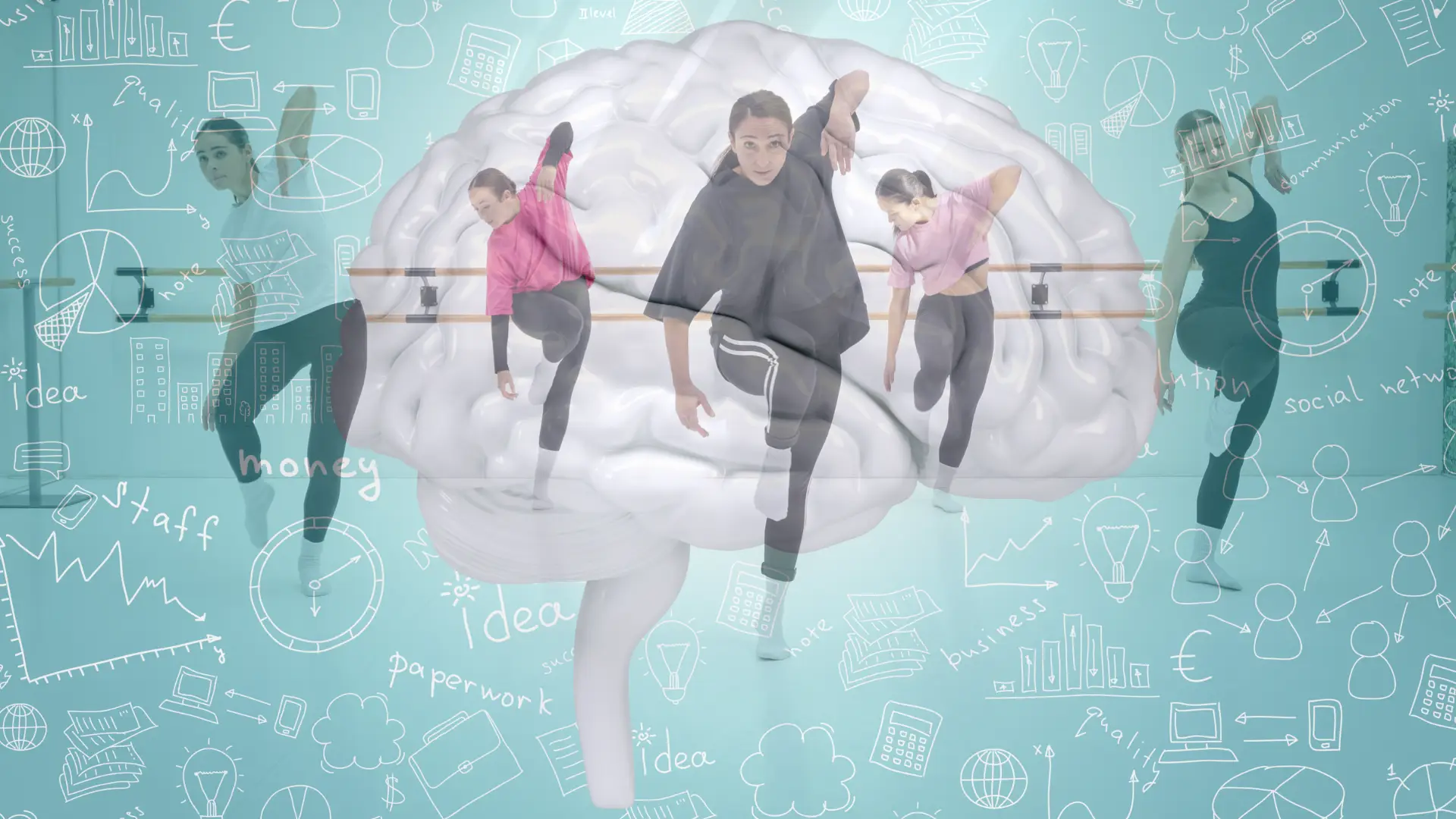
28 Aug The Cognitive Benefits of Dancing: How Movement Strengthens the Mind
When we think about dancing, the first things that come to mind are rhythm, movement, and joy. But behind the music and choreography, something remarkable is happening—your brain is working just as hard as your body. Dance is not only exercise; it’s one of the most powerful tools for improving cognitive health at any age.
From memory and focus to creativity and problem-solving, dancing activates multiple parts of the brain at once. That’s why researchers often describe it as a “full-brain workout.” Whether you’re three years old or well into your golden years, the cognitive benefits of dancing can help you stay sharp, alert, and thriving.
Here’s how dancing strengthens the brain and why it’s one of the smartest activities you can choose.
1. Dance Improves Memory and Learning Skills
Every dance class is a memory game. Students have to learn steps, remember sequences, and recall timing—all while staying in rhythm with music. This constant practice strengthens the brain’s memory centers, making it easier to process and store information.
For children, learning choreography builds skills that directly support academic learning, such as pattern recognition, sequencing, and recall. For adults, especially older dancers, these same activities help keep memory sharp and may even reduce the risk of age-related decline.
Simply put, every new routine is like mental gymnastics for your brain.
2. Dance Enhances Focus and Concentration
Unlike some forms of exercise, dancing demands your full attention. You can’t just zone out—you have to stay tuned into the music, follow the instructor, and concentrate on your body’s movements. This mindfulness strengthens focus, teaching the brain to pay closer attention to details and stay in the present moment.
This heightened concentration benefits dancers outside the studio as well. Children often find it easier to focus in school, while adults can experience improved productivity and mental clarity in everyday life.
3. Dance Boosts Problem-Solving and Creativity
Dancing is a beautiful balance between discipline and freedom. Structured routines challenge dancers to solve problems on the spot—“Which foot comes next?” “How do I stay in rhythm?” Meanwhile, freestyle dancing allows the brain to explore creativity, self-expression, and innovation.
This constant switching between problem-solving and imaginative thinking keeps the brain flexible. It encourages dancers to approach challenges from multiple angles, a skill that translates directly to school projects, work challenges, and life’s daily puzzles.
4. Dance Strengthens Coordination and Neuroplasticity
Cognitive health is not only about memory or creativity—it’s also about how the brain communicates with the body. Dancing strengthens neuroplasticity, the brain’s ability to form new connections and adapt to new challenges.
Every time you learn a step, balance on one foot, or synchronize with music, your brain and body must communicate quickly and effectively. This improves coordination, balance, and reaction time. For children, this builds strong motor skills. For adults, it helps keep the body agile and the mind adaptable.
5. Dance Elevates Mood and Reduces Stress
The brain doesn’t function well under constant stress. Luckily, dancing is a natural stress-reliever. Moving to music releases endorphins—the “feel-good” chemicals that lift mood and fight anxiety. At the same time, it lowers cortisol, the hormone responsible for stress.
A relaxed brain is a healthier brain. By easing tension, dance makes it easier to think clearly, solve problems, and maintain a positive outlook. That’s why so many dancers leave class feeling lighter, happier, and mentally refreshed.
6. Dance Builds Social and Emotional Intelligence
Dance is often shared with others—whether in a classroom, a team performance, or a social setting. This interaction stimulates parts of the brain responsible for empathy, trust, and communication. Partner dances, for example, teach non-verbal communication and cooperation, while group dances build teamwork and shared purpose.
For children, this means learning valuable social skills that help them at school and with friends. For adults, it’s an opportunity to build community and connection, which are vital for long-term brain health. Social interaction has been proven to protect against cognitive decline, making dance a double benefit: mental stimulation plus human connection.
7. Dance Slows Cognitive Aging
Perhaps one of the most exciting cognitive benefits of dance is its impact on aging. Because dance combines physical activity, mental challenge, creativity, and social interaction, it’s one of the most effective activities for preserving brain health as we grow older.
Unlike repetitive exercise, dance constantly challenges the brain with new rhythms, routines, and patterns. This novelty stimulates cognitive function and helps maintain mental sharpness. Research even suggests that older adults who dance regularly show slower signs of cognitive decline compared to those who engage in other forms of exercise.
In other words, dancing keeps the brain young.
Final Thoughts
Dance is much more than movement to music—it’s a total brain workout. Every class engages memory, focus, creativity, problem-solving, coordination, and emotional intelligence, while also reducing stress and building social bonds. Whether you’re a child just starting out or an adult looking for a way to stay sharp, the cognitive benefits of dancing are truly remarkable.
So, the next time you step into a class, remember: you’re not just learning steps. You’re training your brain, nurturing your creativity, and building mental strength that will benefit you in every part of life.
Ready to experience the brain-boosting power of dance? Join Rugcutterz Danz Artz and discover how movement can sharpen your mind while bringing joy to your heart.


